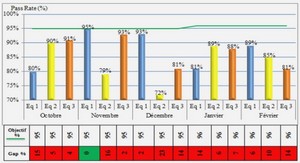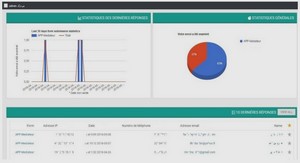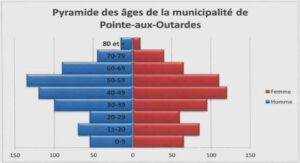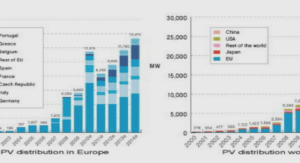Analysis of polymer blend morphologies from transmission electron micrographs
Thermomechanical properties of polymer blends seem to depend on their morphology on microscales and in particular on the size of the dispersed phase particles and/or their distances (ligament thickness). Precise characterization of morphologies by few simple geometrical parameters is often a quite delicate task, in particular because of the strong polydispersity of these systems. We present here a simple method based on image analysis of transmission electron micrographs (TEM) to estimate both distributions in particle size and ligament thickness. We first reconstruct three dimensional distributions in particle size from two dimensional measurements and show in particular that corrections from section thickness become significant when thickness is comparable to particle size. Knowing the distribution in particle size, we extend the model initially proposed by Wu to estimate the distribution in ligament thickness. This method provides a more detailed relation between the distribution in particle size and the distribution in ligament thickness. Advantages and limitations of the method are illustrated by practical examples on polyamide-12 systems filled with various particle dispersions. mechanical properties of a given polymer can be greatly modified – either improved or worsened – by incorporating particles of a second minority phase. Most often, the quality of the morphology (size, continuity, homogeneity, orientation…) is crucial for the final performances of these heterogeneous materials.
In particular, Wu showed that the impact resistance of semi-crystalline polymers toughened with rubber particles is intimately related to the average ligament thickness, Ln, which is defined as the average surface-to-surface quantitative characterization of the blend morphologies is of paramount importance. For example, Figure 39a and Figure 39b show micrographs of two distinct samples of polyamide- 12 toughened by blending with the same copolymer. The impact toughness of these two samples are very different. Indeed, their notched Charpy impact toughness at 25°C are 100 kJ/m2 and 80 kJ/m2 respectively. Are the morphologies as different as impact experiments could suggest? Qualitatively, they look very similar but can one be certain? In fact, micrograph b is an image of the injected sample shown on image a after a thermal treatment (quiescent melting and recrystallization) which in principle does not alter the dispersion morphology. On the other hand, the dispersion shown on Figure 39c looks much denser than those on Figure 39a or b. One could expect very different mechanical properties. Yet, it is the same sample as in Figure 39a but the ultrathin section observed under TEM is about twice thicker. Hence, quantitative techniques which characterize particle dispersions are essential tools to understand how impact performances depend on the blend morphology and how they can be controlled in terms of compounding and processing.
Here, we present a fairly simple method based on image analysis of transmission electron micrographs to determine both distributions of particle sizes and ligament thicknesses. Image analysis is traditionally performed with scanning electron microscopy (SEM). In the present study, we use transmission electron microscopy (TEM) which provides additional information at finer scales about the possible nanostructure of the particles and/or the crystalline organization of the matrix. Unlike SEM which shows cross-sections of the bulk morphology, TEM shows a 2D projection of a thin section of about 50-100 nm thick. In order reconstruct the true 3D distribution in particle size, we consider some specific features of the TEM technique as illustrated in Figure 40. A “cross-section” effect, which also exists with SEM, arises from the fact that the observed micrograph is a 2D section of randomly cut particles. As a result, the apparent diameter of a particle on the image is smaller than its real diameter as soon as the particle is not cut through its center. This is the case of particles 1 and 3 in Figure 40. Such effect implies that raw measurements overestimate the fraction of small particles. On the other hand, a “projection” effect, which is more specific to transmission microscopy, comes from the finite thickness of the thin section. All the particles which center is inside the thin film appear on the image with their real diameter as shown in Figure 40 for particle 2. Hence, this latter effect can counterbalance the former cross-section effect. We correct both effects using a Schwartz-Saltikov algorithm for sections of finite thickness12,13.




